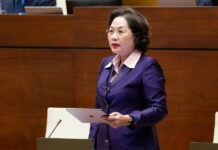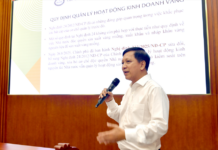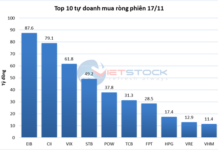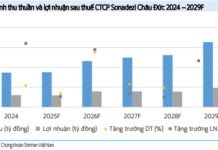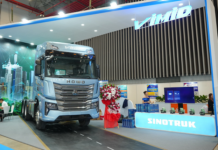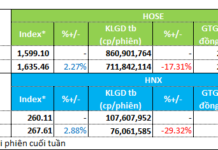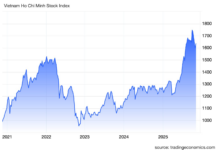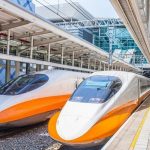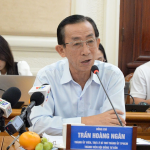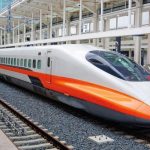
Prime Minister Pham Minh Chinh emphasized the view, principle, and methodology for investing in high-speed railways on the North-South axis, stating that it must be innovative and modern with a strategic vision and effectiveness, in line with Conclusion 49 – Photo: VGP/Nhat Bac
|
Also attending the meeting were Deputy Prime Ministers Tran Hong Ha, Tran Luu Quang, and Le Thanh Long; Minister of Transport Nguyen Van Thang; Minister and Head of the Government Office Tran Van Son; Minister of Natural Resources and Environment Dang Quoc Khanh; and leaders of ministries, sectors, and central agencies.
The Politburo has issued Conclusion No. 49-KL/TW dated February 28, 2023, on the orientation for the development of Vietnam’s railway transport by 2030, with a vision towards 2045. The National Assembly has also passed Resolution No. 103/2023/QH15 dated November 9, 2023, on the socio-economic development plan for 2024, which requires the effective implementation of Conclusion 49 of the Politburo and the acceleration of the construction of important national railway routes, including the East-West railway line. The resolution also calls for the completion of the proposal for the high-speed railway project on the North-South axis, with the aim of approving the investment policy for the project as soon as possible in 2024.
In line with the conclusions of the Politburo and the National Assembly, and under the direction of the Prime Minister, the Ministry of Transport has developed a proposal for the investment policy for the high-speed railway on the North-South axis to submit to the competent authority. The Standing Government, the Prime Minister, and Deputy Prime Minister Tran Hong Ha have held several meetings on this matter.
Concluding the meeting, Prime Minister Pham Minh Chinh highly appreciated the report presented by the Ministry of Transport, noting that it included new and clearer points compared to previous meetings and was relatively comprehensive and persuasive. He also acknowledged the dedicated and responsible contributions of the delegates present at the meeting.
The Prime Minister instructed the Ministry of Transport to continue studying and supplementing the proposal, making it even more convincing and comprehensive. He emphasized the need to further elaborate on the political, legal, and practical basis; the views, principles, and methodology; as well as the objectives and requirements. He also requested a clearer definition of tasks and solutions in the proposal.
Regarding the political basis, the Prime Minister mentioned Conclusion 49 of the Politburo and Resolution 103 of the National Assembly as the legal basis. He also noted the practical basis, highlighting the significant transport demand, especially for passenger transport along the North-South axis, and the high logistics costs in Vietnam compared to other countries, which increase product prices and reduce the competitiveness of goods and services.

Minister of Transport Nguyen Van Thang speaking at the meeting – Photo: VGP/Nhat Bac
|
The Prime Minister emphasized the need for an innovative and modern approach with a strategic vision and effectiveness, in line with Conclusion 49. He stated that the goal is to complete approximately 1,541 kilometers of high-speed railway on the North-South axis, passing through 20 provinces and cities, within a timeframe of about 10 years, with the aim of completing it by 2035.
To achieve this goal, the Prime Minister instructed the Ministry of Transport to study and propose the most favorable, shortest, and efficient route. He also suggested a design speed of approximately 350 km/h for the high-speed railway.
Considering the existing transport options on the North-South axis, including three road routes (National Highway 1, Ho Chi Minh Road, and the under-construction North-South Expressway), along with sea, air, and existing railway transport, the Prime Minister emphasized the need to build a high-speed railway with appropriate functionality. He suggested focusing primarily on passenger transport while also accommodating fast freight transport and national defense and security requirements. Additionally, he recommended the continued improvement and upgrading of the existing railway system for cargo transport.
The Prime Minister also instructed a thorough study of the total investment to ensure its appropriateness, taking into account the speed and scale of similar high-speed railways in other countries and Vietnam’s geographical and geological conditions. He further emphasized the importance of calculating the potential for capital recovery and evaluating the economic, social, financial, transport, and logistics effectiveness, as well as direct and indirect comprehensive effects. Based on these evaluations, he requested the proposal of mechanisms and policies to mobilize capital through various methods and diversify funding sources, including central and local budgets, loans, bond issuance, and business capital.
Additionally, the Prime Minister advised considering a management model that incorporates smart, modern, and digitized aspects, encompassing both transport business management and infrastructure management. He also highlighted the importance of human resource training, technology transfer, and the formation of an ecosystem to develop the railway industry, as outlined in Conclusion 49, with appropriate steps and a feasible roadmap.
The Prime Minister requested Deputy Prime Minister Tran Hong Ha to continue providing direct guidance, and instructed the Ministry of Transport to further elaborate on the above content, incorporating the valuable inputs from the meeting, to finalize the proposal and accompanying documents. He emphasized the need to closely follow Conclusion 49 of the Politburo and Resolution 103 of the National Assembly and asked for a report to be submitted to the upcoming Government meeting for consideration and decision by the competent authority.
Ho Chi Minh City maintains the goal of building 200km of urban railway by 2035
Ho Chi Minh City (HCMC) is determined to achieve its goal of building a 200km metro network by 2035, despite facing numerous challenges. This affirmation was made by Phan Van Mai, Chairman of the People’s Committee of HCMC, during the fourth meeting of the Advisory Council on the Resolution No. 98 on piloting some specific policy mechanisms for the development of HCMC and the Urban Railway Advisory Board.
High-speed North-South Railway Project Political Bureau Targeted for March 2024
The Government has urgently requested the Ministry of Transport to expedite the completion of the project proposal, submit it to the Government’s Standing Committee and the Party Central Committee by March 2024. It is essential to promptly finalize the feasibility study report of the project, submit it to the National Assembly for consideration, and make a decision on investment direction in 2024.








